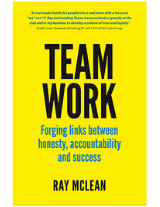A recent global engagement study by Oracle identified that only 48 per cent of new hires agreed that company on-boarding practices set them up for growth and success. Facilitator Tim Ferguson identifies strategies to make your new employees’ entry into the company as effective as possible.

Making the job offer is just the start Designed by katemangostar / Freepik
Recruitment is a timely and expensive process, yet when the right employee is selected for the role, inducting new team members is often process-focused and quick. However, this could be a costly mistake.
The ‘recruitment to onboarding’ time ratio is heavily skewed, with many employers believing that recruitment is over once the contract is signed. However, research has shown the importance of a thorough induction program in ensuring staff retention and engagement.
In one study, 91 per cent of employees said a good induction and onboarding process is ‘very important’ or ‘important’ as an engagement factor, and 22 per cent said they would look for another job if they did not receive this.
With the prospect of losing a new team member a real possibility, companies should develop a strategy that is effective for both the business and the people it employs.
Practical basics
An emphasis on engagement and ensuring new employees feel welcome is a reflection of a business’ culture, and the balance between mechanics (systems/processes) and dynamics (culture/behaviour) is an important consideration.
Explaining human resources and payroll processes, having an office tour and covering legislative and occupational health and safety issues are necessary elements. However, ignoring the people side of things can be problematic.
An induction into ‘what we stand for’ and ‘here’s what you can expect from us’ is an important step in helping a new employee to understand how they can be a part of the team from day one.
Eyes wide open
New staff members are often primarily concerned with working out how they fit into their new team. This is a powerful window of opportunity for existing staff to positively engage and demonstrate desired behaviours to emulate in the team.
High-performing team members can act as role models, and creating situations such as attending a client meeting together is a good way to showcase desirable traits and engage in feedback conversations.
This two-way engagement can be really beneficial for a new team member, while also acting as a reminder for existing team members that their actions and behaviour are often mimicked by newer employees as they become active members of the culture.
We all play a role
While line managers and team leaders are often called upon to integrate new employees into the company’s culture, it is important to recognise that every member plays a role.
If you aspire to a culture that is underpinned by support and collaboration, then it follows that the willingness of current team members to make the effort to engage with new staff members on a personal level is an important way to demonstrate that what you say you stand for is both real and tangible.
There are many different ways to build this into a new employee’s induction, but sometimes these are the things that are overlooked.
A client once had to address the issue of a high turnover rate, and one team member admitted she chose not to engage with new employees in their initial months due to the uncertainty of their long-term employment. Understanding that this had an impact on their turnover rate was a step in the right direction.
Ask questions…
We often assume we know what is best for others, or that one method of induction will work for everyone. However, the best approach is generally a bespoke one. This doesn’t necessarily mean significant time and investment in the induction process; it may just require asking the right questions.
Finding out what works for your new team member and how they would like to be inducted is a simple and effective approach. Not everyone enjoys having an official ‘buddy’ they can reach out to, but for others this can make a world of difference.
Knowing they have options and some control over how they are brought into the fold is empowering and will demonstrate you value their presence from day one. Investing in strong professional relationships and demonstrating that you are open to feedback – even from your newest employees – can lead to valuable learning for both parties.
…and more questions
Don’t stop at asking questions on how they would like their induction conducted – plan regular check-ins at timely intervals to ask how everything is coming along and if they need help in a specific area. This can be handled by different team members on each occasion and can be used as a means of establishing stronger relationships across the team.
Having regular review sessions will allow the new hire to reflect on their time and share about their ongoing experience, as well as provide the opportunity to receive feedback on the climate in the office from an unbiased observer. This can also help improve your recruitment and induction processes over time, as new employees assist with refinement based on their comments.
Reflection in the mirror
Ultimately, the induction should reflect the culture you want to create. Each business has a signature DNA to encourage employees’ professional growth and that of their company.
Be clear about what you stand for as a business, and ensure it is communicated in a meaningful way from the first interaction.
Looking to hire
From the moment it is decided a new employee is needed, set and clarify your expectations, not just of their role, but how they can fit in. Ensure your job advertisement gives an overview of your business culture if you consider it important, and in the interview process, assess the candidate on both mechanics and dynamics.
Hiring someone based on their technical ability and experience alone, ignoring cultural fit, can set them (and you) up to fail.
In businesses with thorough induction processes, two thirds of employees rate themselves as highly engaged, and over half exceed expectations in performance reviews.
By ensuring their initial transition into the company is smooth and engaging, direct benefits are yielded for the company. People are key assets in success, and the sooner they understand the role they play, the earlier you can provide them with the opportunity to realise their full potential.
Think about how you induct people:
- What does it say about your culture?
- Which areas of your workplace culture could be improved?
- Are you open to receiving feedback from the people who have been inducted into your business?
For a discussion about how Leading Teams could help you address culture and onboarding issues in your business, contact us now.
This piece was originally published on mybusiness.com.au
Tim joined Leading Teams in 2012 after experiencing our program as a client. Tim is a facilitator based in Northern NSW.
Learn more Tim Ferguson.



